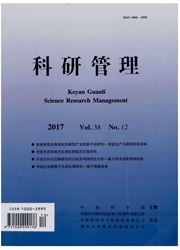

 中文摘要:
中文摘要:
基于全要素生产理论,利用数据包络分析(DEA)方法构建非参数前沿,在共同前沿方法框架下分析比较2000-2007年中国全要素能源效率的区域差异,并利用"技术缺口比率(TGR)"定量考察中国区域能源利用的技术差距。结果表明:样本期间内中国全要素能源效率整体水平偏低,在全国共同前沿下的均值仅为0.688,维持既定经济产出的节能空间达到31.2%;从区域角度来看,中国能源技术存在显著差异,其中东部地区接近全国最优水平,样本期内TGR始终维持在0.95以上,而中、西部地区距离全国潜在最优能源技术还分别存在18.6%和26.6%的改进潜力,三大区域之间的能源技术差距有进一步扩大的危险。
 英文摘要:
英文摘要:
Based on total -factor production theory, a non- parametric frontier is constructed by Data Envelopment Analysis (DEA). Under the framework of meta - frontier, the analysis and comparison have been made on the regional disparities of China' s total - factor energy efficiency during the period of 2000 - 2007. Additionally, a quantitative Technology Gap Ratios (TGR) - based analysis has been made on tile technology gap on regional energy utilization in China. The conclusions are as follows : The overall level of China' s total - factor energy is on the low side during the sample period, its average value is only 0. 688 under countrywide meta - frontier and thus energy - saving potential could be increased by 31.2% in order to maintain the present economic output. There are significant regional disparities in energy technology and risk of further expansion of the energy technology gaps among three major areas. In east area of China, the TGR stays at above 95% and approaches the optimal nation level. In central area and west area of China, comparing with optimal national level, there are improvement potentials of 18.6% and 26.6% , respectively.
 同期刊论文项目
同期刊论文项目
 同项目期刊论文
同项目期刊论文
 Prediction of water inrush from coal floor based on small sample data mining technology and realizat
Prediction of water inrush from coal floor based on small sample data mining technology and realizat Multi-attribute group decision-making method based on generalized aggregation operators in trapezoid
Multi-attribute group decision-making method based on generalized aggregation operators in trapezoid Application of entropy-weight fuzzy comprehensive evaluation method in post safety competency apprai
Application of entropy-weight fuzzy comprehensive evaluation method in post safety competency apprai 期刊信息
期刊信息
